A Margaux Wine Renaissance: Change of Generations Yields Gains in Quality and Consistency. A Dozen Producers’ Showcase. (8-Bottle Pack $395)
Nowhere has consistency been more sought after than in the Médoc—this despite the vagaries of climate, the uncertain wine market and as seen in Margaux especially over the past twenty years, the importance of the human touch.
Americans used to the innovation and iconoclastic spirit of native winemakers will sometimes struggle to comprehend the French wine system, one rooted in heritage, where AOP laws are sacrosanct. Interestingly, one area in which tradition among French growers and winemakers may have leapfrogged a generation is in the application of artificial treatments and mechanical harvesting. More and more vineyards are today opting for biodynamics in the field and natural fermentation in the cellar, with almost 90% of Bordeaux properties eschewing chemicals and many returning to handpicking grapes, techniques that were used for centuries before commercial fertilizer and mechanical harvesters were available.
In Margaux, makers of the supple, perfumed Cabernet Sauvignon-based wines have adhered to tradition as faithfully as in any appellation, and perhaps, too much, as a modern understanding of the complexity of Margaux-specific terroir evolves. Says Jean-Henri Schÿler, former president of the Syndicat of Margaux: “The vineyards here have thick bands of clay beneath some parts of gravelly soil, and these can block the descent of roots. Tractors often cut the roots, which lie near the surface, compounding the problem. And the clay can encourage the formation of underground pools of water. Proper drainage can solve the problem but it’s a major investment.”
In part with assistance from the Syndicat, changes are happening at a faster pace, and a new guard of winemaker is losing some of the baggage left them by their forebears, creating a Margaux renaissance that is well worth exploring.
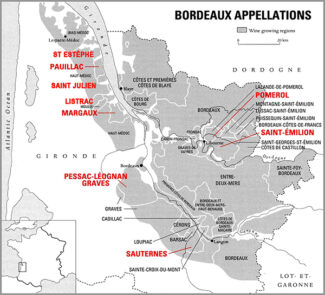
|
|
|
|
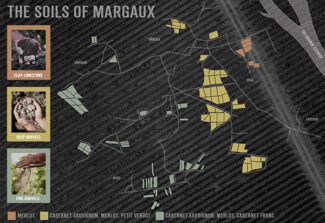
Margaux has up praise from aficionados as diverse as Suzi Quatro (“I’m a bit of a wine snob and like a glass of Château Margaux ’82 to unwind”) and Ernest Hemingway (“I drank a bottle of wine for company, Château Margaux. It was good company” – ‘The Sun Also Rises’), while Thomas Jefferson waxed philosophically about vintage 1784. In part that is because Château Margaux is the most user-friendly of the five classified Premier cru Classé wines: André Lurton, who grew up in a Margaux wine family in the 1930s, sums it up like this: “Wines here were never about extract or power. They were all about finesse. That’s what we looked for and admired in a wine.”
|
|
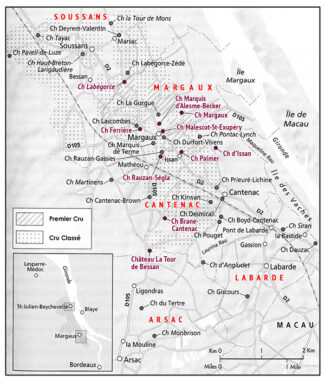
|
|
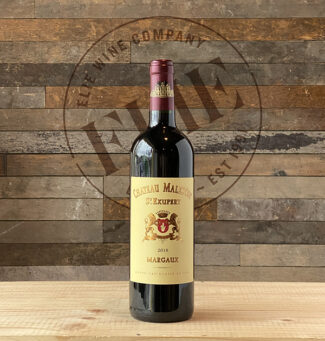 Château Malescot St. Exupéry, Margaux 2018 ($84)
Château Malescot St. Exupéry, Margaux 2018 ($84)
Intensity, richness, velvet textures and purity of fruit are in forefront of the wine, followed by a luscious middle palate with layers of ripe, sweet, dark red fruits, licorice, espresso, plums and cherries. About 9000 cases produced.
*click on image for more info
Château Marquis d’Alesme
After a storied past similar to many great estates in Bordeaux, the modern era for Château Marquis d’Alesme began in 2006 when it was purchased by Hubert Perrodo, owner of another Margaux vineyard, Château Labégorce. Tragically, he was killed in a skiing accident shortly after the sale and it is currently owned and managed by his daughter, Nathalie Perrodo. Extensive renovations to the château, which were completed in 2015, show a fascinating blend of French and Asian influences—an homage to Nathalie, who is half French and half Chinese. Above the fermentation vats, for example, a large, bronze dragon hangs, resplendent with patterns that take into account water, earth and heaven impressed into the cement.
The 40-acre d’Alesme vineyard is divided into three unique terroirs. The section with silica and gravel soils is planted to 63% Cabernet Sauvignon, 30% Merlot, 5% Petit Verdot, and 2% Cabernet Franc. A second parcel located next to the château that consists of silica and gravel soil and some clay is planted to 100% Merlot, while the third section is mostly young vines, which is the source for their second wine, Marquise d’Alesme.
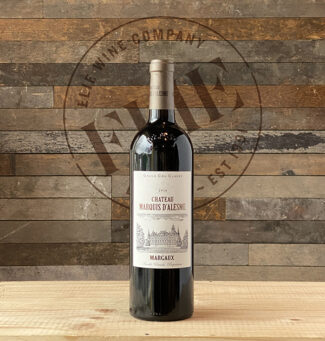 Château Marquis d’Alesme, Margaux 2018 ($68)
Château Marquis d’Alesme, Margaux 2018 ($68)
A blend of 55% Cabernet Sauvignon, 35% Merlot, 5% Petit Verdot and 5% Cabernet Franc, the wine is voluptuous and concentrated, showing a floral essence behind smoke, earth, bramble fruits and espresso. Promises a long future with at least 2-3 decades of positive evolution anticipated. Around 7000 cases produced.
*click on image for more info
Château Ferrière
This Troisième Cru, formerly known as the smallest classified growth at fewer than 20 acres, now boasts 30 planted to 65% Cabernet Sauvignon, 29% Merlot, 4% Petit Verdot, and 2% Cabernet Franc, with vines averaging a half century old. Still relatively obscure, some of Ferrière’s vineyard is owned by the property, while other parcels are under long-term rental agreements, with the best parcels in the commune of Cantenac, with deep Garonne gravel deposited on limestone marls.
Ferrière’s winemaker Eric Boissenot explains the driving philosophy of his art: “First of all, I strive to understand the earth. It takes a minimum of two years to understand a new terroir and to capture its expression—its faults and qualities—and to learn to handle it delicately. Here, I like to stress finesse rather than power by concentrating on the quality of the tannins. Sometimes faults may be accentuated by having too low a yield, but balanced vines are more important.”
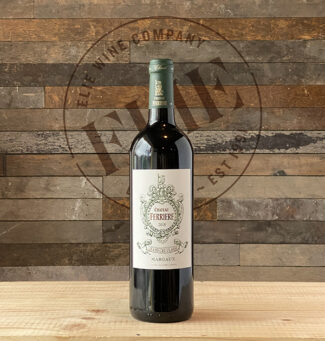 Château Ferrière, Margaux 2018 ($59)
Château Ferrière, Margaux 2018 ($59)
The blend is 68% Cabernet Sauvignon, 25% Merlot, 5% Petit Verdot and 2% Cabernet Franc, and the high percent of Cabernet Sauvignon comes through in the wine’s flavor profile, structural feel and ample tannins with blackberry and graphite aromas and flavors.
*click on image for more info
Château Labégorce
The first written mention of Labégorce’s vineyards can be found in the oddly named Cocks and Feret guidebook in 1868, dating the winemaking property to 1332. Bordering Châteaux Margaux and Lascombes, the Labégorce estate was purchased by the late Hubert Perrodo in 1989 and is today owned by his daughter Nathalie as part of the family’s portfolio, which also includes Château Marquis d’Alesme and Château Tour de Mons.
Under Perrodo ownership, the percentage of Merlot planted in the 160 acres of vineyard has increased to 45%, since much of the property has clay-rich soils. The vines are, on average, 30 years old, but there are a few parcels planted in the 1950s, and at least one plot that has reached the century mark.
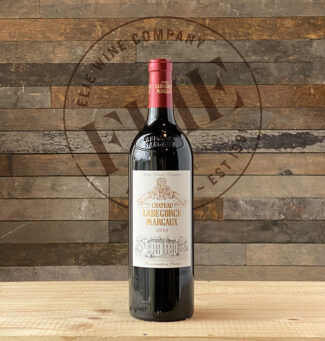 Château Labégorce, Margaux 2018 ($47)
Château Labégorce, Margaux 2018 ($47)
50% Cabernet Sauvignon, 44% Merlot, 3% Cabernet Franc and 3% Petit Verdot, the wine shows nuances of tilled earth, allspice, cedar, mocha, and fresh violets intermingled with integrated baking spice notes. 12,000 cases made.
*click on image for more info
Château Brane Cantenac
One of fifteen Deuxièmes Crus (Second Growths) in the original Bordeaux Wine Official Classification of 1855, the estate had been producing one of the Médoc’s most highly regarded wines long before that. For four consecutive generations, the Lurton family has been at the helm, with Henri Lurton as the current proprietor. He says, “The exceptional terroir of Château Brane-Cantenac is made of deep quaternary-era gravels. Each plot has been carefully studied to plant the most suitable grape-variety, the one which will express itself the best on it. Along with my team we strive to reveal each plot’s potential by working in a plot by plot and intra-plot approach: The ‘Burgundy way.’
Brane-Cantenac’s terroir can be subdivided into several parcels; the first and most valued is planted in a large sweep of gravel in front of the château at the top of the Margaux-Cantenac plateau, providing radiant heat to the vines as well as excellent drainage. The second section is situated behind the château, where the gravel is intermixed with sand. La Verdotte is a 25-acre vineyard planted 35 years ago with 55% Cabernet Sauvignon, 40% Merlot, 4.5% Cabernet Franc, and 0.5% Carmenère. A fourth vineyard called Notton is a 32-acre plot of coarse gravel over clay, and more distant from Brane-Cantenac than the other vines.
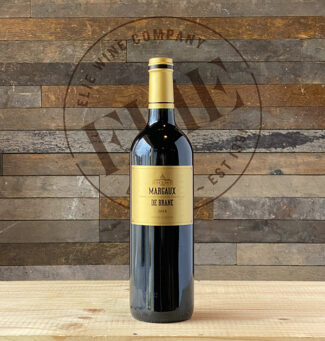 Château Brane Cantenac ‘Margaux de Brane’, Margaux 2018 ($42)
Château Brane Cantenac ‘Margaux de Brane’, Margaux 2018 ($42)
The château’s third label is still quintessential Margaux based on 74% Cabernet Sauvignon, 23% Merlot, and the remainder Cabernet Franc and Petit Verdot, all aged in 70% new French oak. Beautiful cassis and mulberry fruits as well as notes of leafy tobacco, spice, cedar meld with the finely-grained tannins.
*click on image for more info
Château d’Issan
The roots of Château d’Issan’s vines delve deeply into Margaux’s gravel, but not as deeply as the roots of the estate delve into history. One of the oldest producing châteaux in Bordeaux, wines from d’Issan vineyards were used to toast the marriage of Eleanor of Aquitaine and King Henry the Second. Oddly perhaps, although Cabernet Sauvignon is the dominant varietal today, when d’Issan was classified as a Third Growth in 1855, the wine was produced entirely from a grape that is now all but extinct in Bordeaux: Tarney Coulant.
In 2013, Château d’Issan sold a 50% stake to Jacky Lorenzetti of Château Lilian Ladouys, Château Lafon in St. Estèphe and Château Pédesclaux in Pauillac. Along with Emmanuel Cruse, the winemaking has been upgraded to include sorting tables and a new pneumatic press along with an increase of the proportion of new French oak barrels used to age the wine; currently an average of 50%.
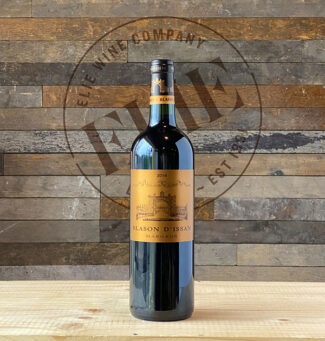 Château d’Issan ‘Blason d’Issan’, Margaux 2018 ($38)
Château d’Issan ‘Blason d’Issan’, Margaux 2018 ($38)
D’Issan’s second wine, introduced in 1995, and made from the estate’s youngest vines. It is fruity and accessible, offering a bouquet of blackberry and cranberry laced with undergrowth, mint, lavender and tobacco leading to full, fruity mid-palate and a mineral-driven finish.
*click on image for more info
Château La Tour de Bessan
One of several properties run by the Lurton family, La Tour de la Bessan is currently run by Marie-Laure Lurton and the consulting oenologist Jacques Boissenot. Spread over three communes (Soussans, Arsac, Cantenac), the blocks that make up the winery are made up of Pyrenean gravel with various amounts of clay in each zone. The 40-acre property is planted to a much higher proportion (62%) of Merlot than is typical in Margaux, with 23% Cabernet and a small amount of Petit Verdot.
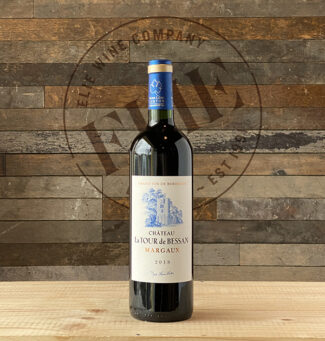 Château La Tour de Bessan, Margaux 2018 ($35)
Château La Tour de Bessan, Margaux 2018 ($35)
60% Merlot, 29% Cabernet Sauvignon and 11% Petit Verdot showing crushed blackberries and elderberries with dark-chocolate undertones on the nose, a savory and fleshy texture on the palate, with firm tannins, minerality and floral notes at the finish.
*click on image for more info
|
|
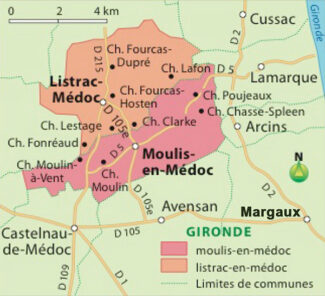
Château Fourcas Dupré
Château Fourcas Dupré combines the name of the locale (the Fourcas plateau) with that of the original owner, Maître Jean Antoine Dupré, who bought the land in 1843. It has changed hands a few times since then, most recently ending up in the possession of Breton entrepreneur and wine aficionado Gérard Jicquel. The soils are primarily Pyrenean gravel, unique to the Médoc, along with chalky clay-limestone subsoil.
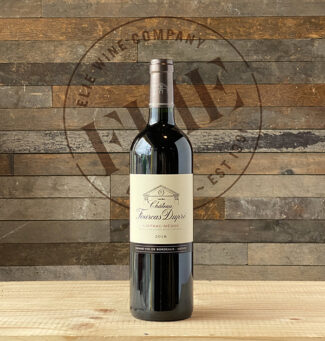 Château Fourcas Dupré, Listrac-Médoc 2018 ($22)
Château Fourcas Dupré, Listrac-Médoc 2018 ($22)
Ripe currants and blackberry appear in the perfumed aromatics, leading to the ‘sous bois’ (forest floor) character that is typical of the appellation with clove and pepper lingering amid the grainy tannins.
*click on image for more info
AND – The following four wines are offered at special prices:
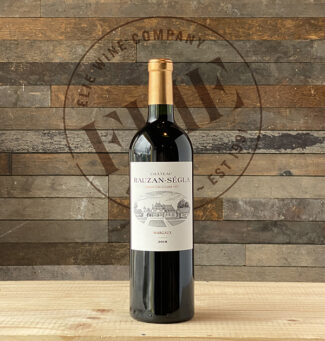 Château Rauzan-Ségla, Margaux 2018 ($179)
Château Rauzan-Ségla, Margaux 2018 ($179)
56% Cabernet Sauvignon, 40% Merlot, 2% Cabernet Franc and 2% Petit Verdot, aged for 18 months in 65% new barriques. Deep garnet-purple color, with potent energy showing crushed black cherries, blackcurrant cordial and mulberries, plus suggestions of violets, star anise, chocolate mint and a touch of tobacco leaf, finishing with fantastic length and loads of earthy sparks.
*click on image for more info
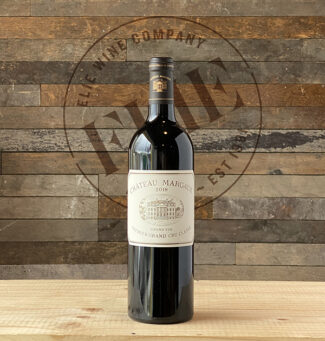 Château Margaux, Margaux 2018 ($935)
Château Margaux, Margaux 2018 ($935)
90% Cabernet Sauvignon, 4% Merlot, 4% Cabernet Franc and 2% Petit Verdot, representing 36% of the 2018 harvest. The incomparable grace and depth of this lauded First Growth is displayed in layer upon layer of concentrated blueberry, cassis, acacia flowers, scorched earth, sandalwood, and violet backed by warm earth and fresh acidity.
*click on image for more info
 Château Brane Cantenac, Margaux 2018 ($106)
Château Brane Cantenac, Margaux 2018 ($106)
74% Cabernet Sauvignon, 23% Merlot, and the rest Cabernet Franc and Petit Verdot, all aged in 70% new French oak. Vibrant notes of kirsch, black raspberries and warm cassis, plus suggestions of roses, forest floor and cinnamon stick finish with a waft of cedar chest.
*click on image for more info
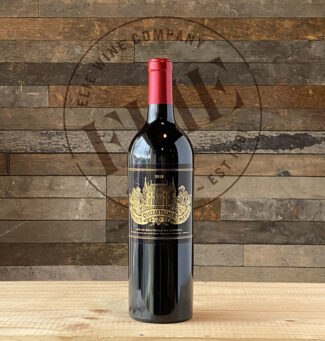 Château Palmer, Margaux 2018 ($476)
Château Palmer, Margaux 2018 ($476)
2018 Palmer is composed of 53% Cabernet Sauvignon, 40% Merlot and 7% Petit Verdot; it oozes fruit with waves of cassis, plum reduction and warmed cherry preserves carried by a dense yet polished and seamlessly embedded structure. A backdrop of violet, lilac and pastis accents add to the purity of expression with a riveting iron spine that lasts through the finish.
- - -
Posted on 2022.03.25 in Margaux, France, Bordeaux, Wine-Aid Packages
Featured Wines
- Notebook: A’Boudt Town
- Saturday Sips Wines
- Saturday Sips Review Club
- The Champagne Society
- Wine-Aid Packages
Wine Regions
Grape Varieties
Aglianico, Albarino, Albarín Blanco, Albarín Tinto, Albillo, Aleatico, Arbanne, Aubun, Barbarossa, barbera, Beaune, Biancu Gentile, bourboulenc, Cabernet Franc, Cabernet Sauvignon, Caino, Caladoc, Calvi, Carcajolu-Neru, Carignan, Chablis, Chardonnay, Chasselas, Clairette, Corvina, Cot, Counoise, Erbamat, Ferrol, Fiano, Frappato, Friulano, Fromenteau, Fumin, Garnacha, Gewurztraminer, Godello, Graciano, Grenache, Grolleau, Groppello, Juan Garcia, Lambrusco, Loureira, Macabeo, Macabou, Malvasia, Malvasia Nera, Marsanne, Marselan, Marzemino, Melon de Bourgogne, Merlot, Mondeuse, Montanaccia, Montepulciano, Morescola, Morescono, Moscatell, Muscadelle, Muscat, Natural, Nero d'Avola, Parellada, Patrimonio, Petit Meslier, Petit Verdot, Pineau d'Aunis, Pinot Auxerrois, Pinot Blanc, Pinot Gris, Pinot Meunier, Pinot Noir, Poulsard, Prieto Picudo, Rondinella, Rousanne, Roussanne, Sangiovese, Sauvignon Blanc, Savignin, Semillon, Souson, Sparkling, Sumoll, Sylvaner, Syrah, Tannat, Tempranillo, Trebbiano, Trebbiano Valtenesi, Treixadura, Trousseau, Ugni Blanc, vaccarèse, Verdicchio, Vermentino, Viognier, Viura, Xarel-loWines & Events by Date
- April 2024
- March 2024
- February 2024
- January 2024
- December 2023
- November 2023
- October 2023
- September 2023
- August 2023
- July 2023
- June 2023
- May 2023
- April 2023
- March 2023
- February 2023
- January 2023
- December 2022
- November 2022
- October 2022
- September 2022
- August 2022
- July 2022
- June 2022
- May 2022
- April 2022
- March 2022
- February 2022
- January 2022
- December 2021
- November 2021
- October 2021
- September 2021
- August 2021
- July 2021
- June 2021
- May 2021
- April 2021
- March 2021
- February 2021
- January 2021
- December 2020
- November 2020
- October 2020
- September 2020
- August 2020
- July 2020
- June 2020
- May 2020
- April 2020
- March 2020
- February 2020
- January 2020
- December 2019
- November 2019
- October 2019
- September 2019
- August 2019
- July 2019
- June 2019
- May 2019
- April 2019
- March 2019
- February 2019
- January 2019
- December 2018
- November 2018
- October 2018
- September 2018
- August 2018
- July 2018
- June 2018
- May 2018
- April 2018
- March 2018
- February 2018
- January 2018
- December 2017
- November 2017
- October 2017
- September 2017
- August 2017
- July 2017
- June 2017
- May 2017
- April 2017
- March 2017
- February 2017
- January 2017
- December 2016
- November 2016
- October 2016
- September 2016
- August 2016
- July 2016
- June 2016
- May 2016
- April 2016
- March 2016
- February 2016
- January 2016
- December 2015
- November 2015
- October 2015
- September 2015
- August 2015
- July 2015
- June 2015
- May 2015
- April 2015
- March 2015
- February 2015
- January 2015
- December 2014
- November 2014
- October 2014
- September 2014
- August 2014
- July 2014
- June 2014
- April 2014
- March 2014
- February 2014
- January 2014
- December 2013
- November 2013
- October 2013
- September 2013
- August 2013
- July 2013
- June 2013
- May 2013
- April 2013
- March 2013
- February 2013
- January 2013
- December 2012
- November 2012
- October 2012
- February 2004
Search



